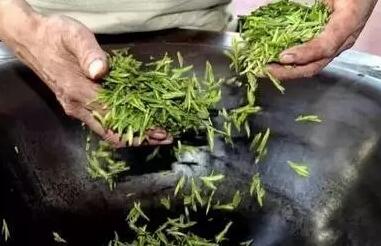Fixation is one of the key processes in tea production. "Green" refers to the fresh leaves, and fixation, as the name suggests, involves disrupting the structure of these leaves.

Why does tea need "fixation"?
Tea leaves contain enzymes, which are biological macromolecules with catalytic functions. These enzymes act as catalysts, speeding up or slowing down biochemical reactions without altering their direction or products.
Most enzymes are composed of proteins (some are RNA), and their activity is easily influenced by factors like temperature and chemical environment (e.g., pH). Under high temperatures, the protein structure of enzymes is irreversibly damaged, leading to complete loss of enzyme activity. The fixation process employs high temperatures to rapidly transform the contents of fresh leaves.
Fixation deactivates enzymes, allowing the contents to form the foundational qualities unique to different types of tea.
Tea "fixation" leverages this property of enzymes—high-temperature deactivation—to promptly stop the activity of oxidases (especially polyphenol oxidase and peroxidase) in fresh leaves.
The purposes of tea fixation are as follows:
1. Quickly deactivate polyphenol oxidase in fresh leaves using high heat to prevent enzymatic oxidation of polyphenols, enabling the formation of the color, aroma, and taste characteristics of green tea, black tea, yellow tea, and pu-erh tea through non-enzymatic reactions.
2. Remove some moisture, softening the leaves from hard to pliable for easy rolling and shaping.
3. Eliminate the grassy smell of fresh leaves and release the tea's enticing fragrance.
In summary, fixation aims to disrupt the structure of fresh leaves, transform their properties, and lay the groundwork for the tea's unique quality. This is the purpose of fixation and the basis for its technical implementation.